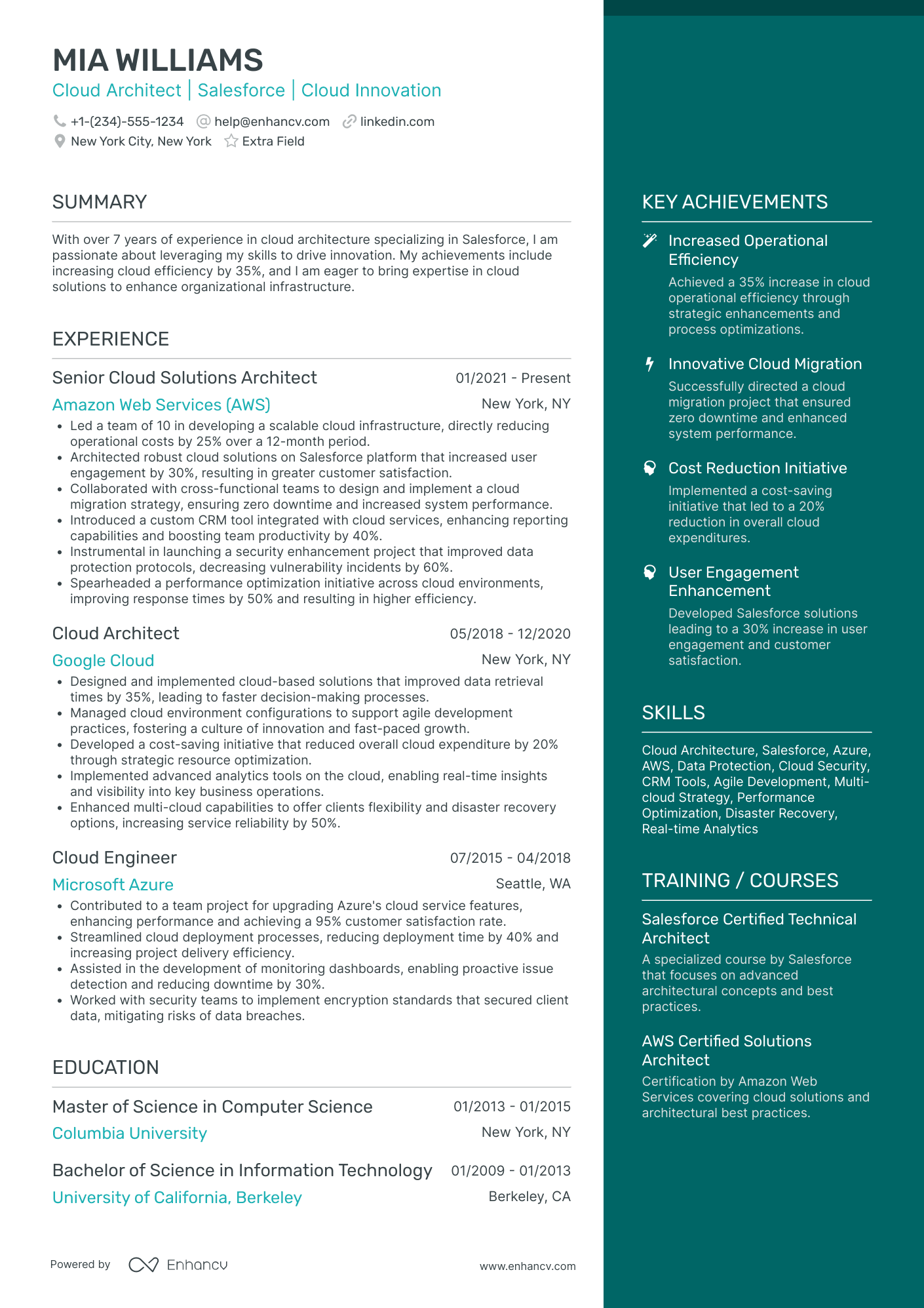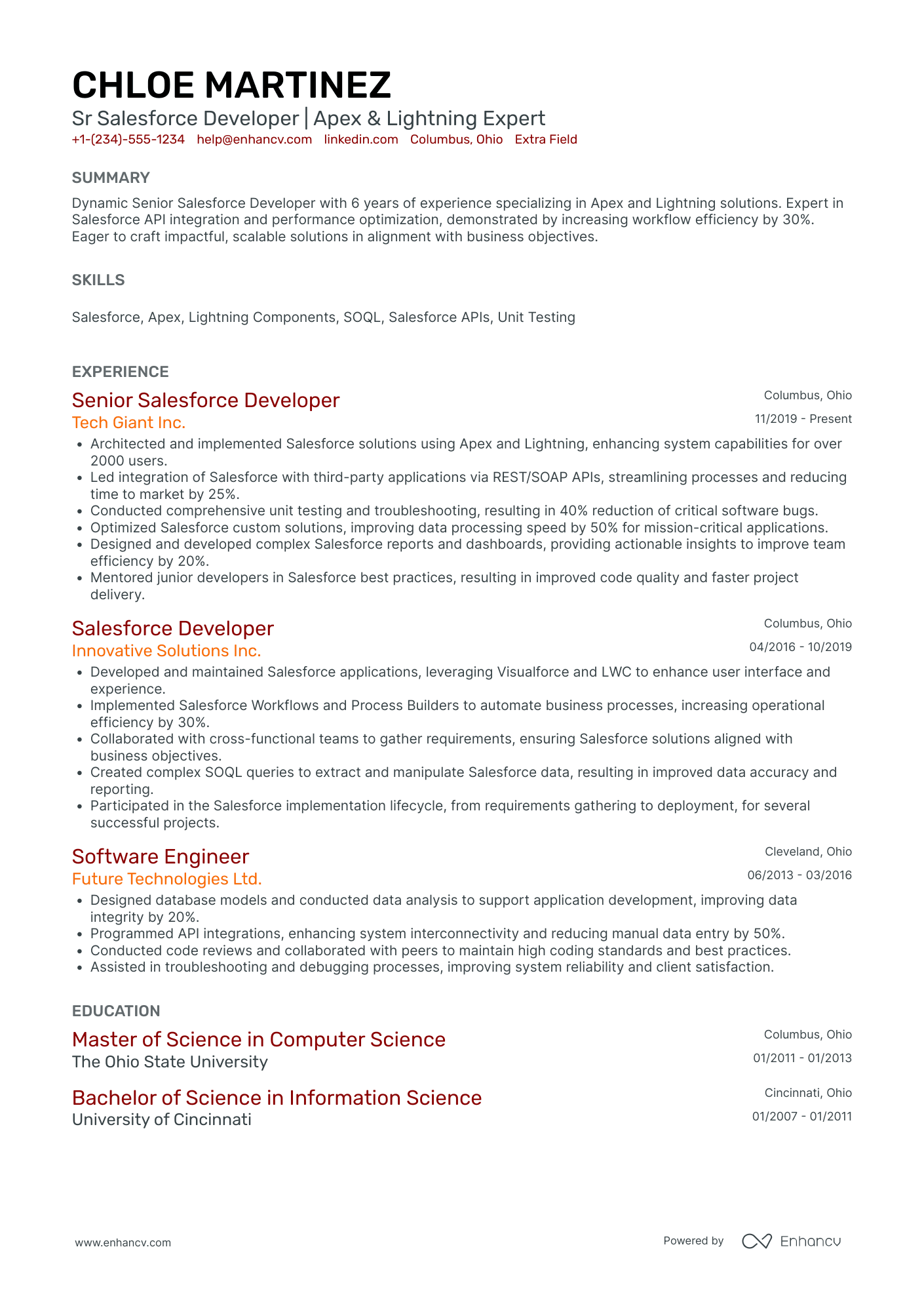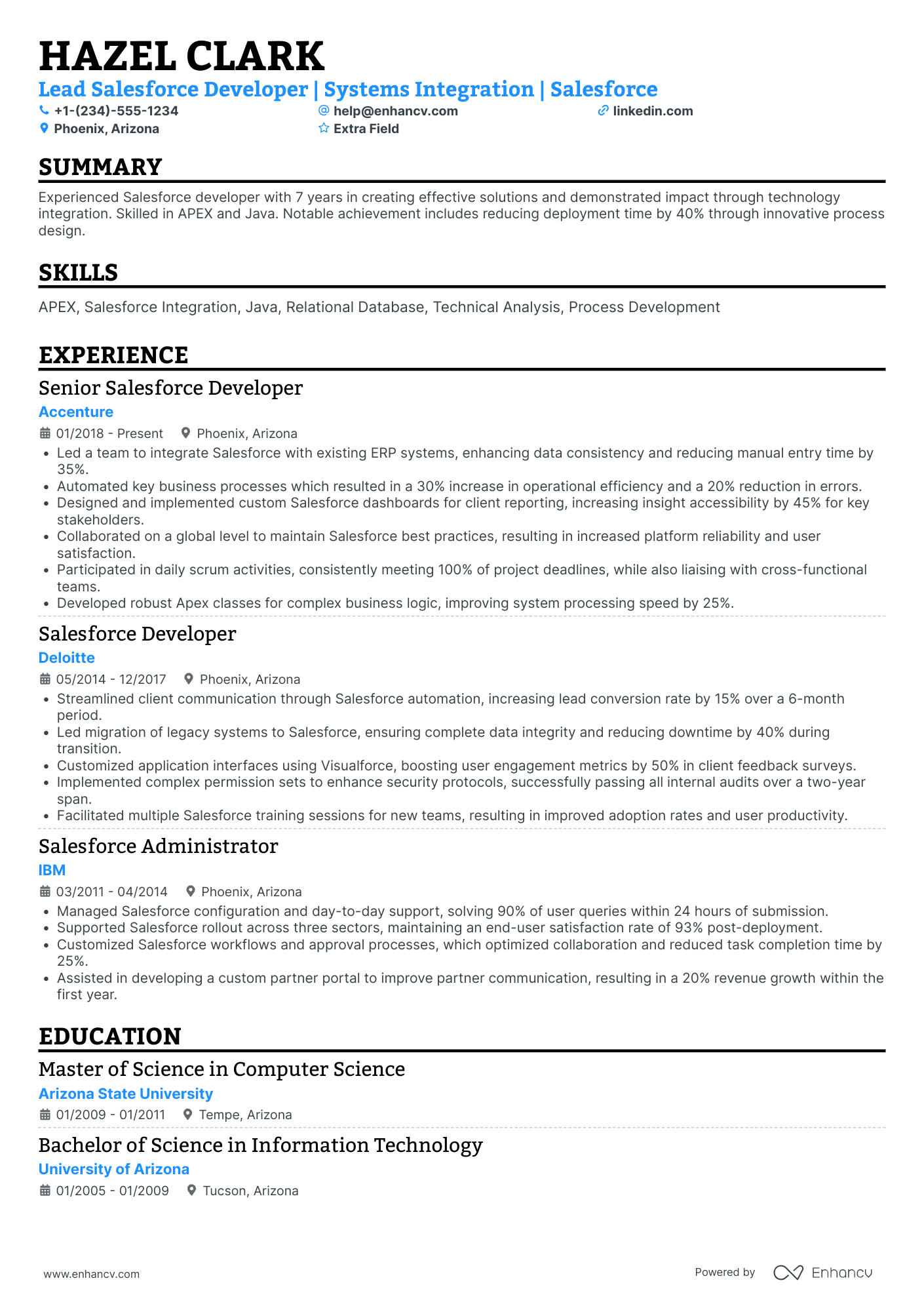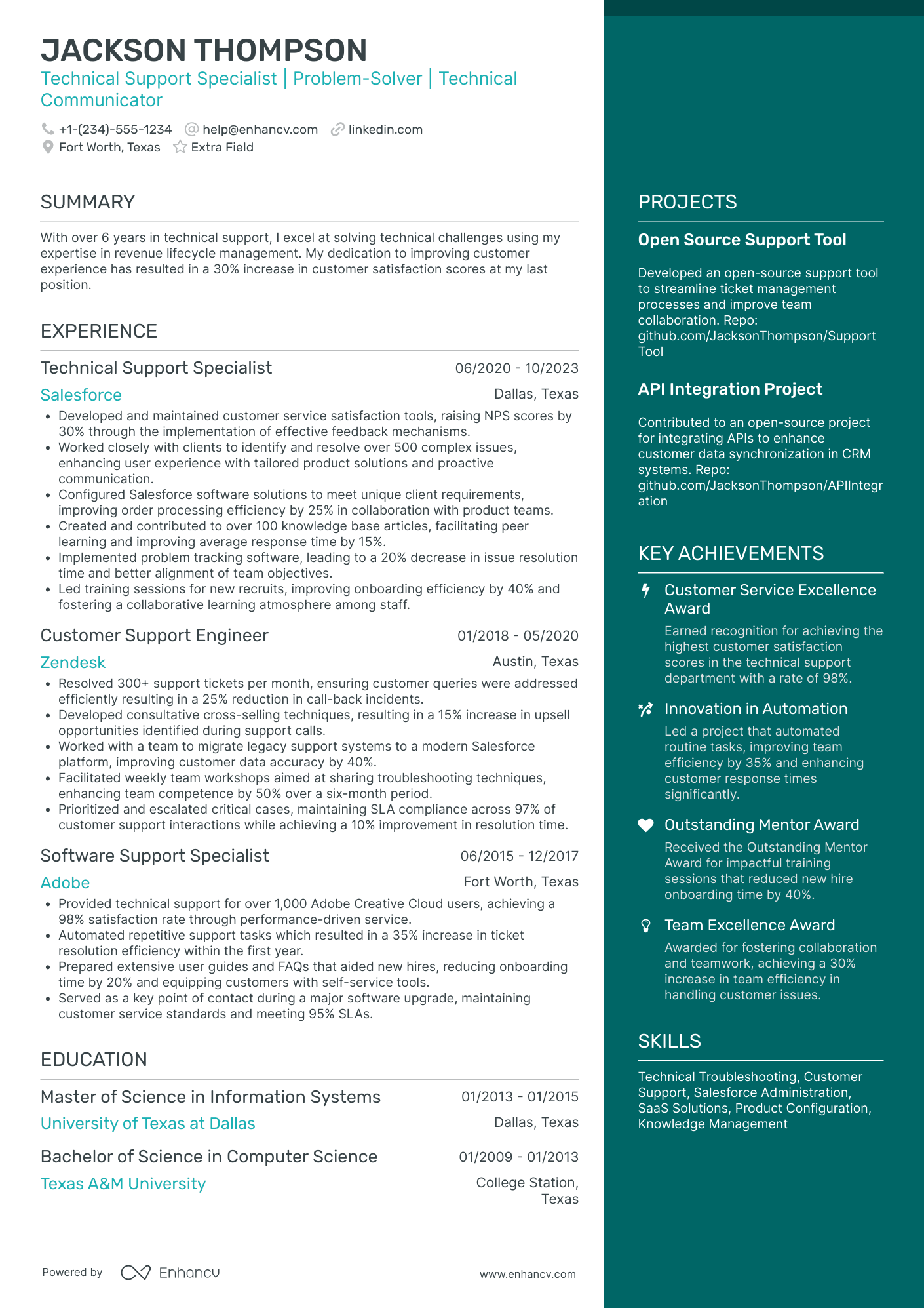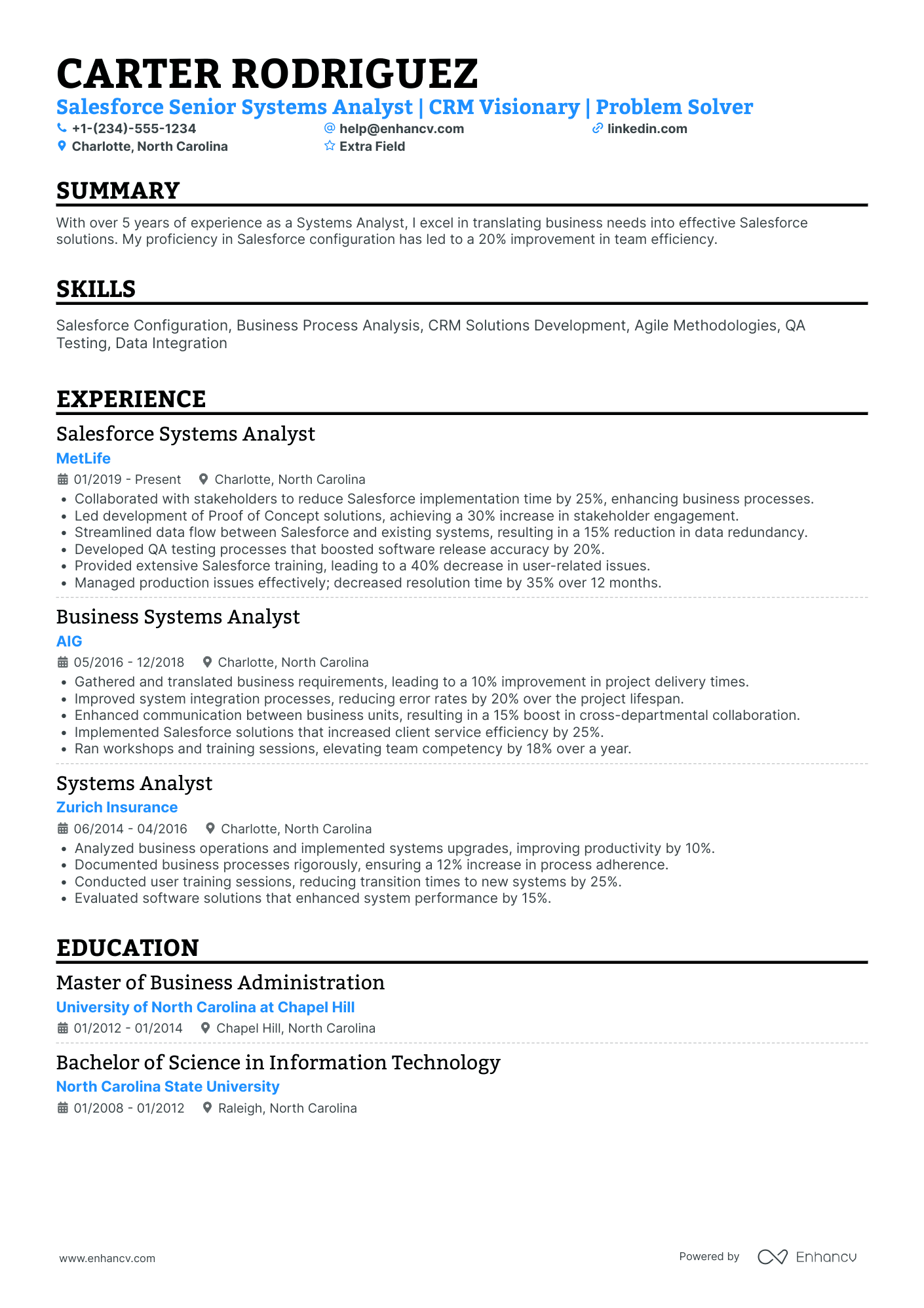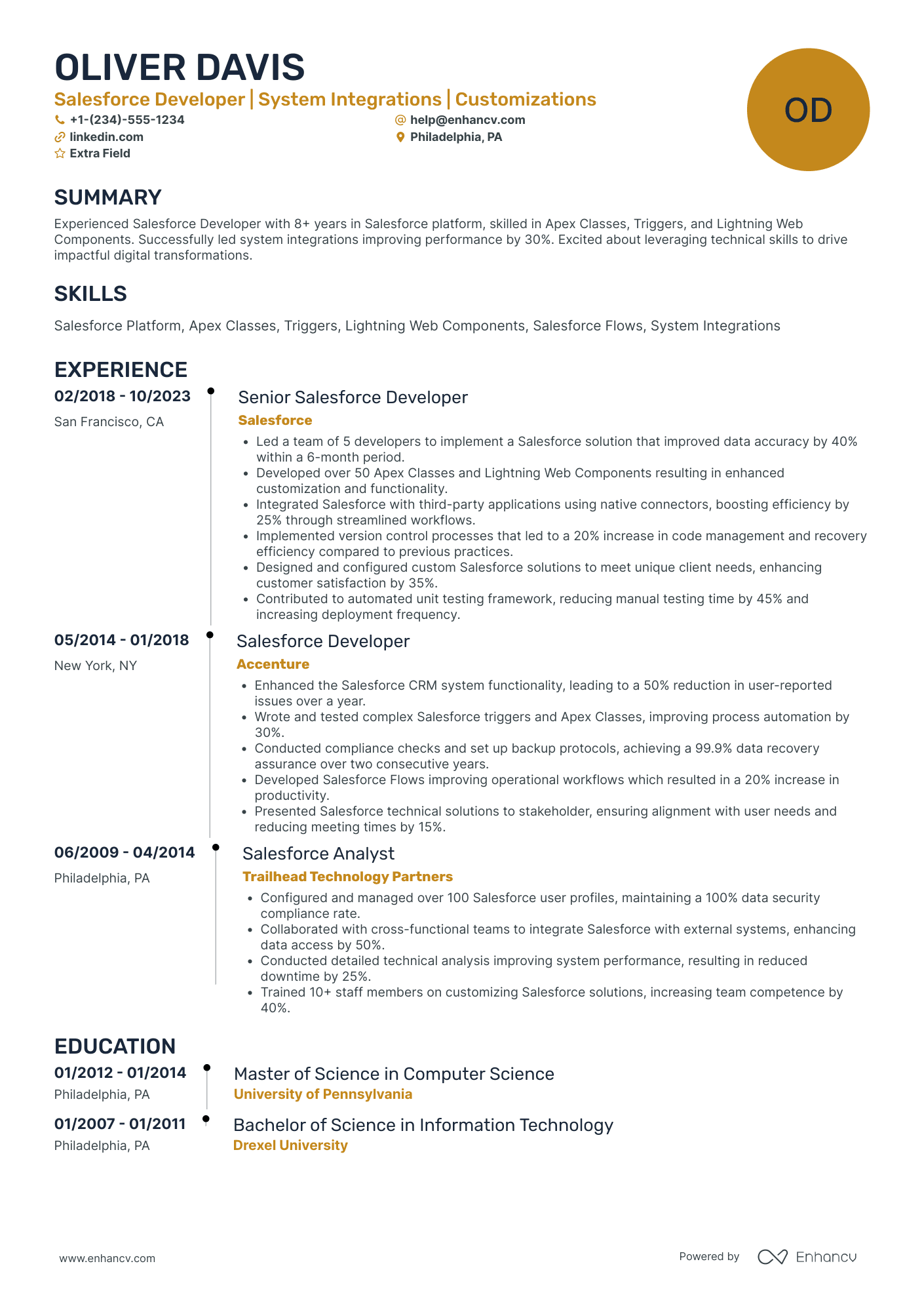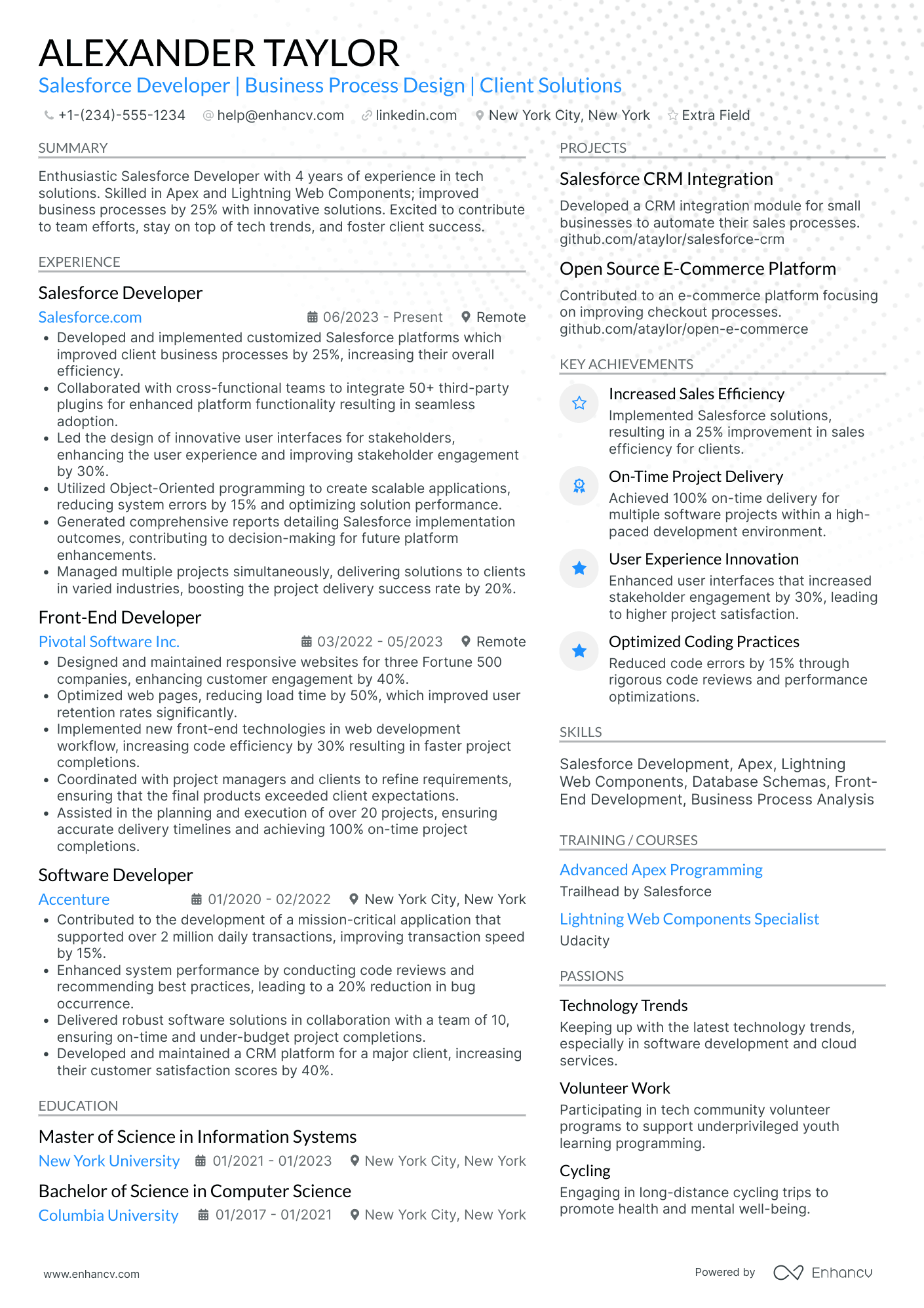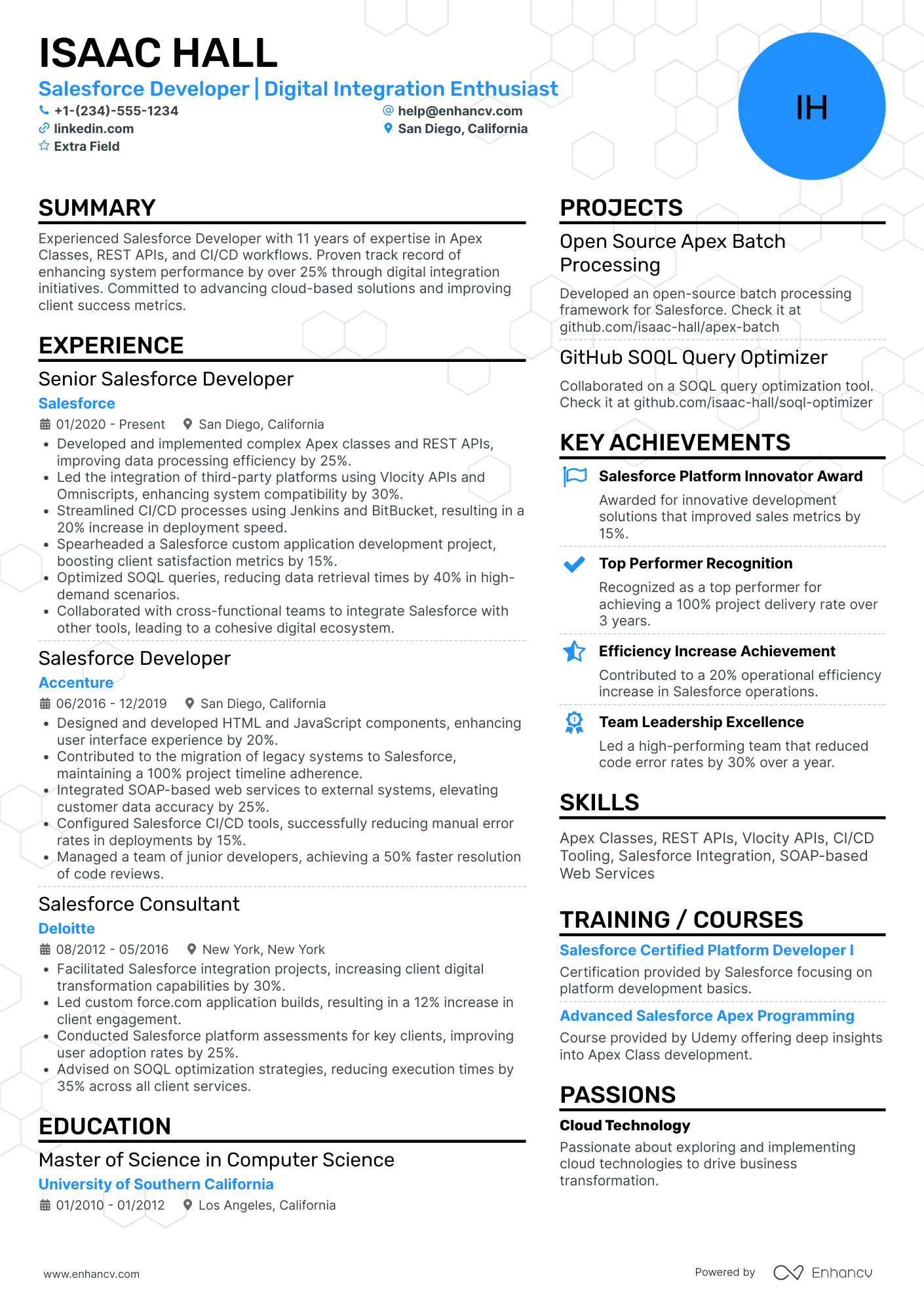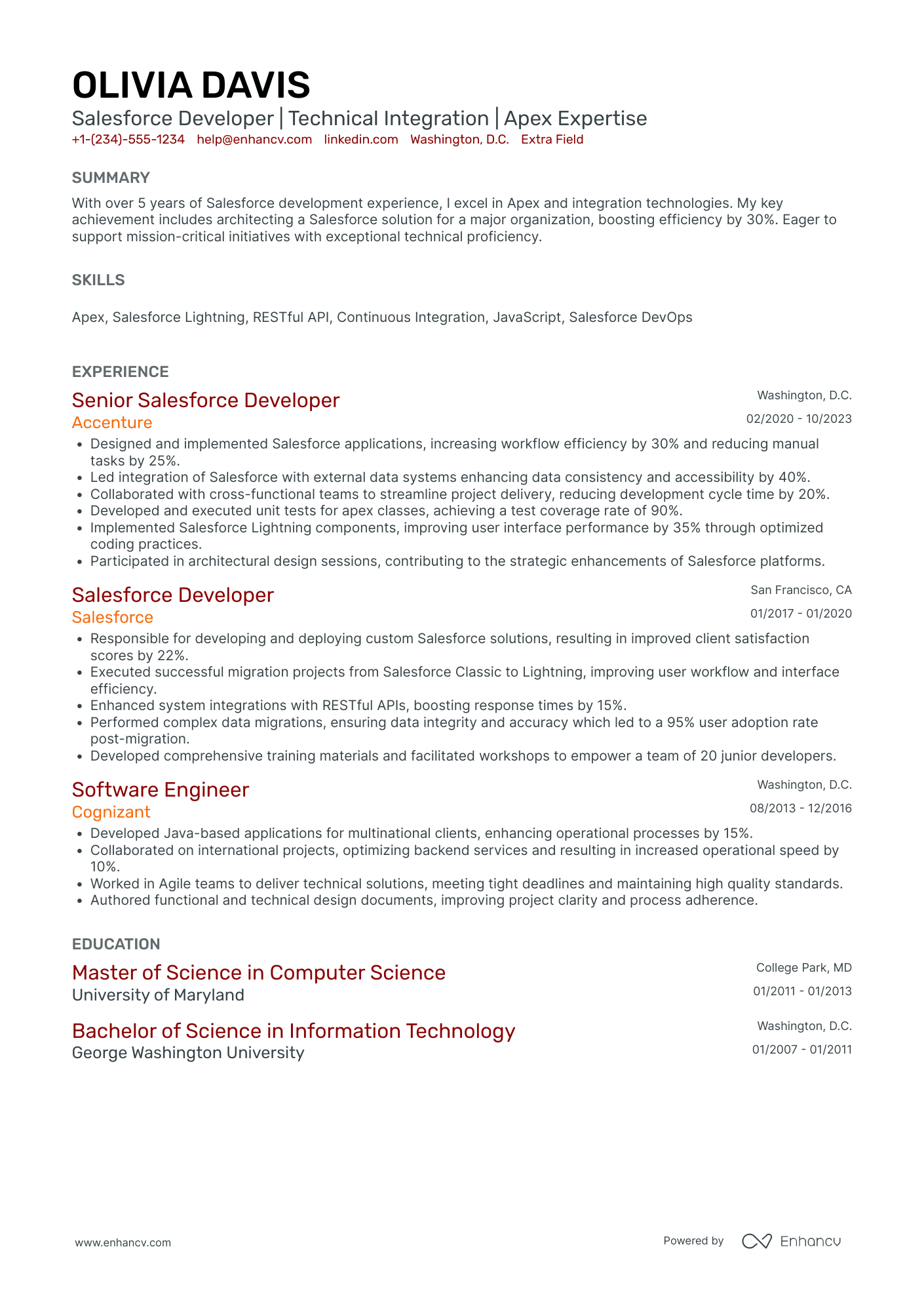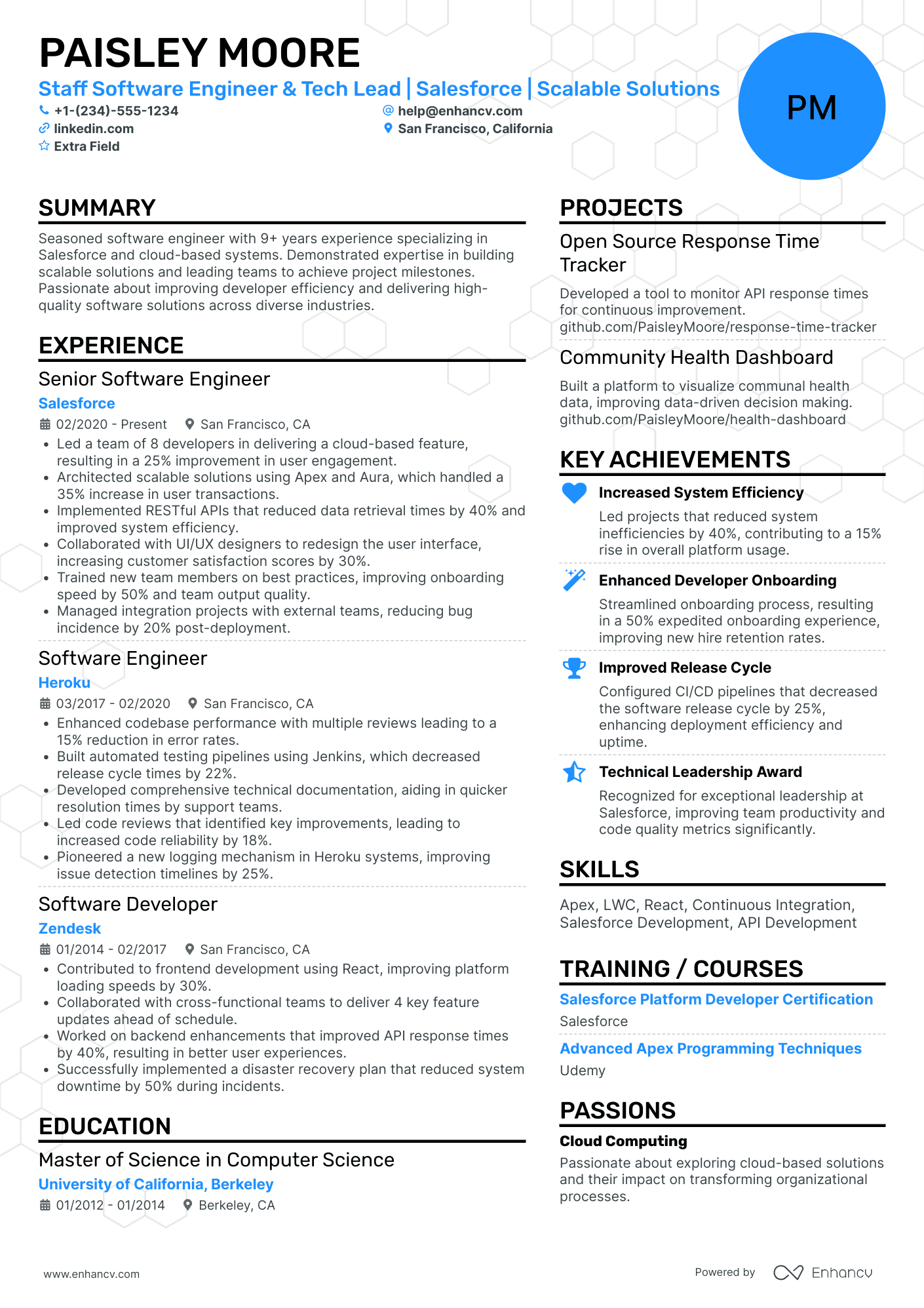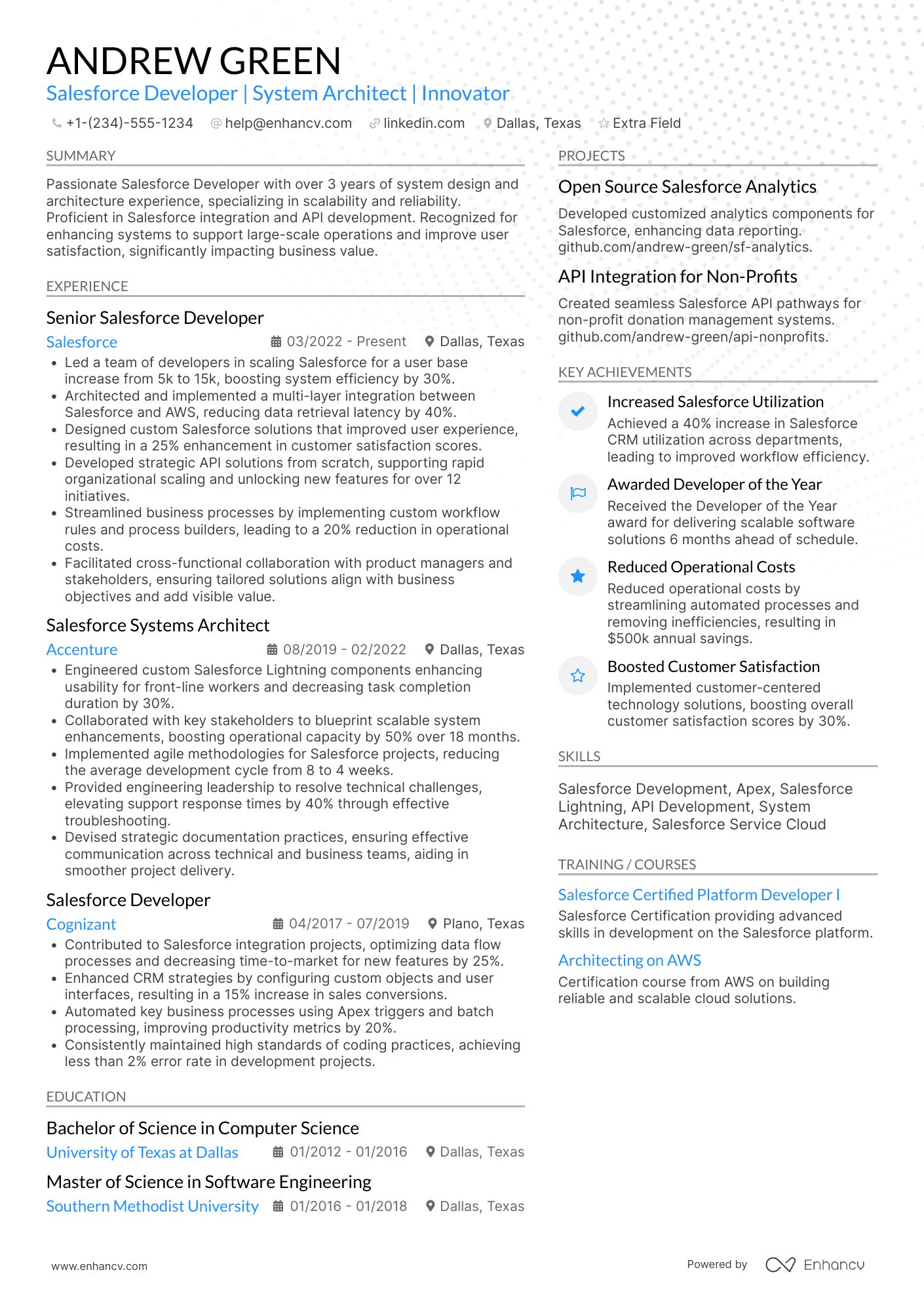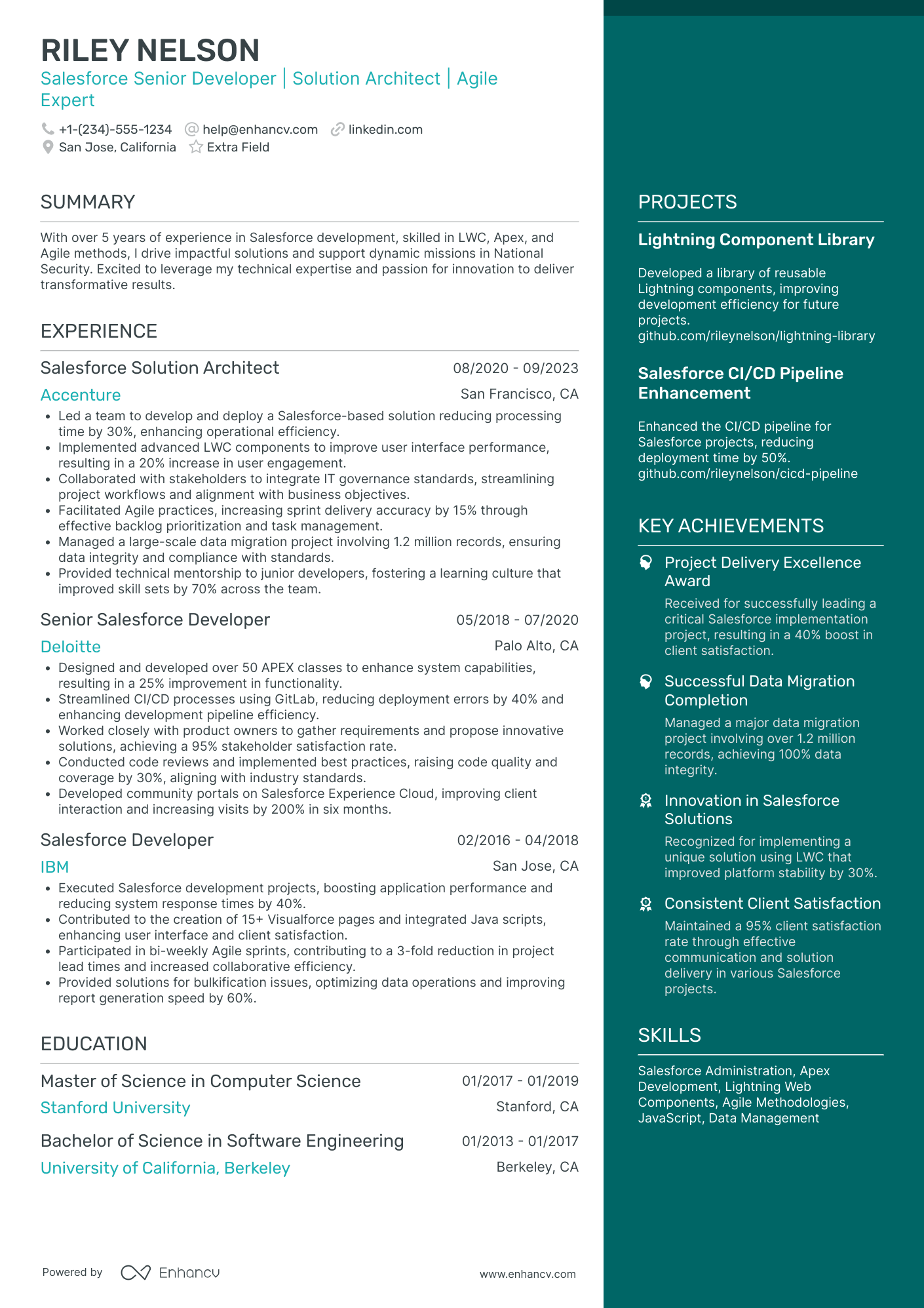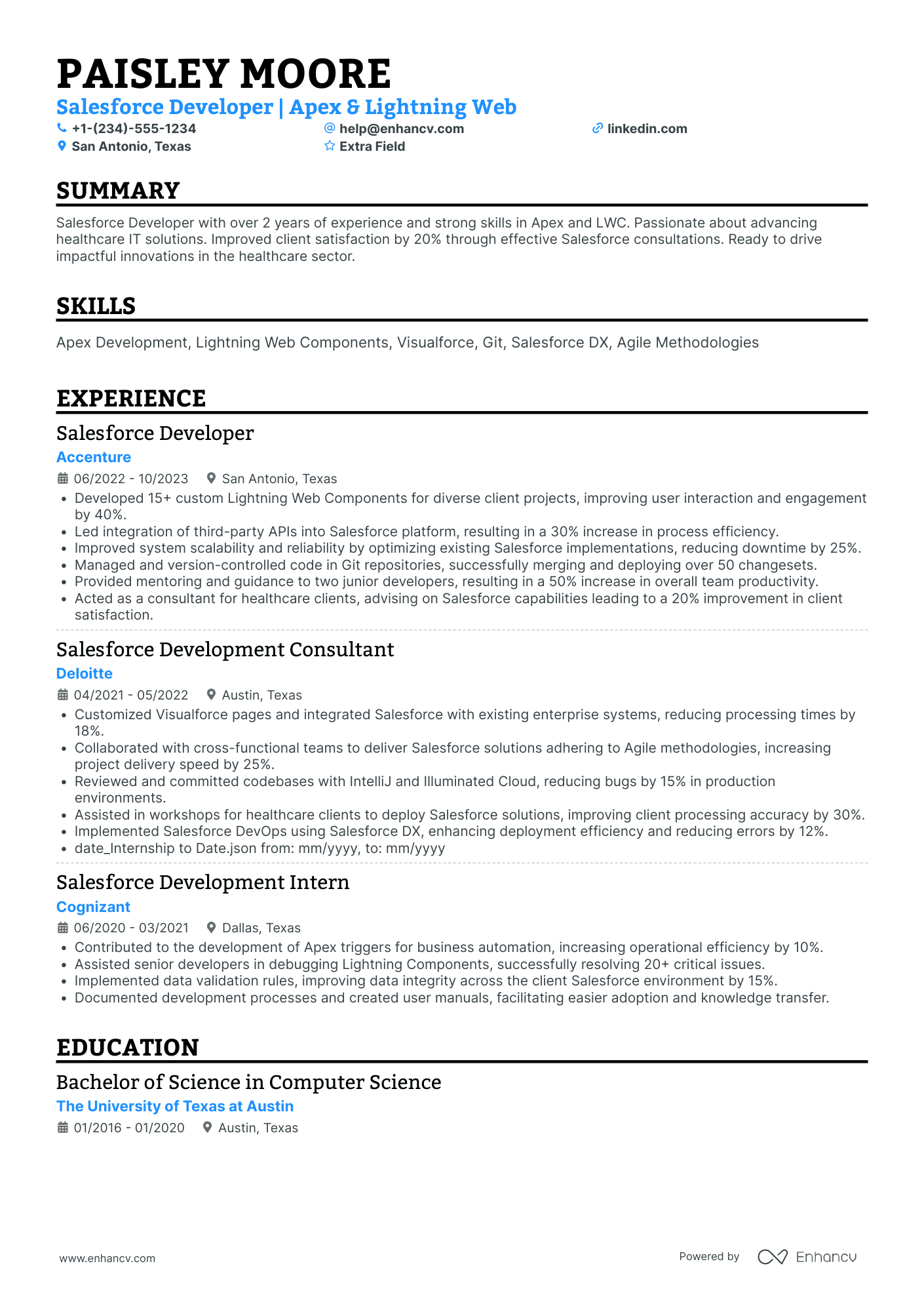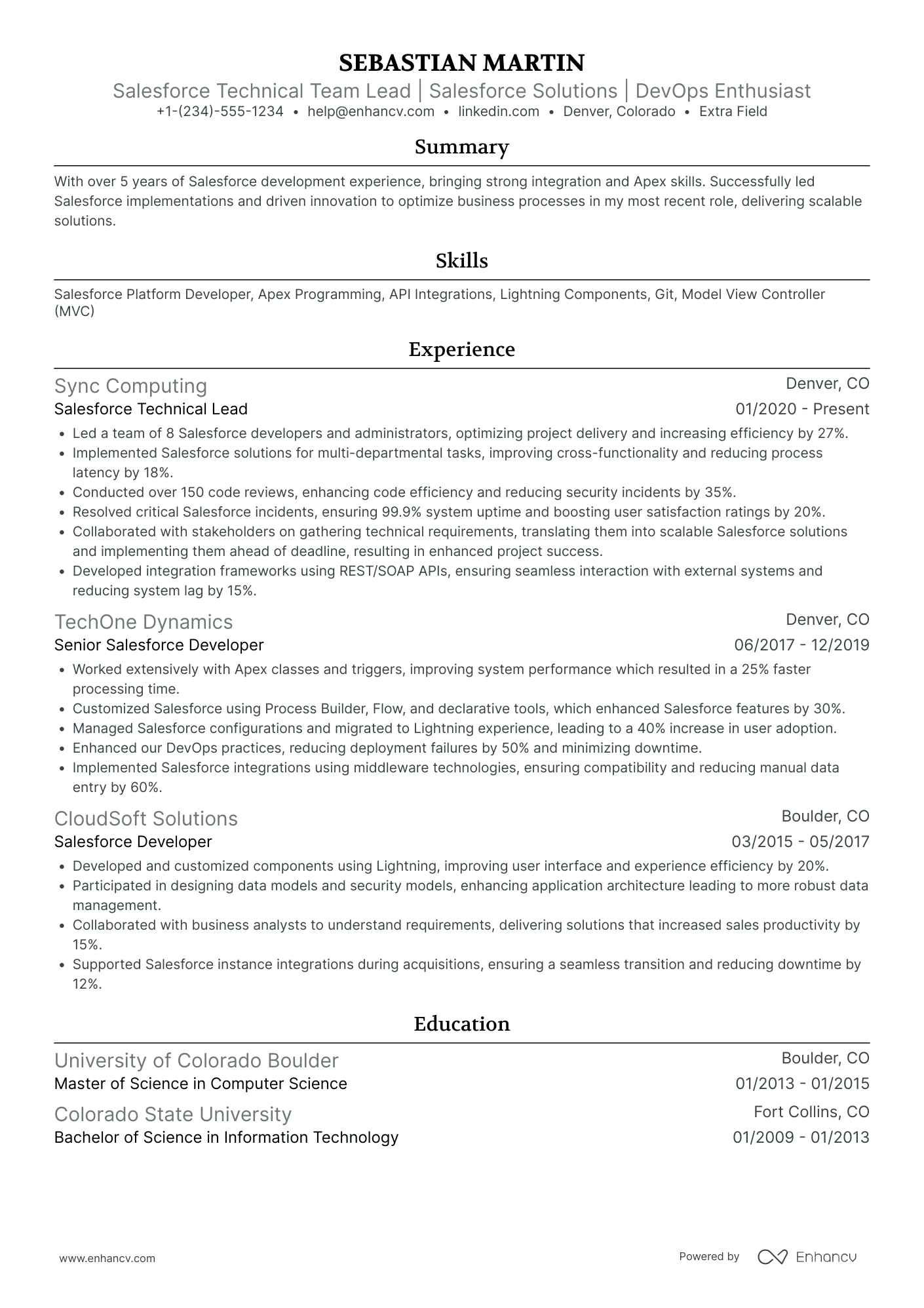Recent research shows that 150,000 companies globally, including many American startups and Fortune 500 giants, rely on Salesforce for customer relationship management. This creates a massive and growing demand for Salesforce developers who not only understand the platform but can also simplify organizational processes.
As a software developer specializing in Salesforce, job opportunities abound, but so does the competition. A quick LinkedIn search might reveal more than 100 applicants for a single position. Within the first 24 hours of posting. You definitely don't want to land in the rejection pile. Instead, you want to articulate your technical skills and business savvy so clearly that you stand out immediately as a top candidate.
Don’t worry, this guide’s got you covered. Think of it as your personal debugger: it’s here to help you smooth out your career path by giving you the best tips to impress not just recruiters but even those without a technical background.
Here’s what else we’ll cover:
- How to include enough detail to be compelling, while also keeping your resume concise and to the point.
- How to design your resume so it doesn’t confuse applicant tracking systems (ATS) and reaches recruiters.
- How to tailor your Salesforce resume to an actual job description and make it count.
- Which skills to emphasize to align with the requirements of the specific job.
- How to write an impactful personal statement that balances technical expertise with clear examples of your expertise.
Before we dive in, you might want to have a look at other Salesforce-related resume guides.
- Salesforce Resume
- Salesforce Project Manager Resume
- Salesforce Admin Resume
- Salesforce Consultant Resume
- Salesforce Business Analyst Resume
- Salesforce developer Cover Letter
How to format a Salesforce developer resume
Choosing the right resume format depends on your specific career path and how you want to present your skills and experience to potential employers. Each format has its advantages, whether you're aiming to underline a robust career progression or spotlight your specific capabilities in Salesforce.
Here are the three most popular resume styles:
- Reverse-chronological resume: Similar to the chronological format but emphasizing the latest jobs first, this format is preferred if you're showcasing a steady climb in your Salesforce career. It clearly displays your most recent and relevant experience at the top, making it easy for hiring managers to see your latest accomplishments.
- Combination (hybrid) resume: This format highlights relevant skills at the top, like specific Salesforce certifications or technical proficiencies, followed by a professional experience section. This is especially effective if you want to emphasize both your tech skills and your career progression, or if you've had a diverse career or gaps in employment.
- Functional resume: This format focuses on your skills and experiences rather than your job history. It's ideal for those who may be changing careers, have gaps in their employment, or are first-time job-seekers. By underlining your Salesforce skills and projects upfront, you can show potential employers what you're capable of, even if you don't have a lengthy career specifically in Salesforce development.
Different markets have specific resume styles – a Canadian resume, for instance, may require a different approach.
A well-organized resume that presents your experience clearly will always stand out to recruiters, helping you move from applicant tracking systems to human eyes more effectively.
So, let us show you how you can improve your resume layout by following some simple guidelines.
Resume designs
- Template: A clean, modern template is perfect for tech resumes.
- Margins: Aim for a margin size between 0.5—1 inch to ensure a tidy appearance. Enhancv’s resume builder lets you adjust the scroller to get the desired margin size and space between sections, allowing you to fit your content without it looking cramped.
- Colors: Choose subtle, professional colors for your resume, avoiding magenta as it may not print well and can also look harsh on screens. Instead, consider customizing your resume colors to align with the Salesforce brand palette. This can be easily achieved with just a few clicks in our app.
- Fonts: Use legible resume fonts such as Arial, Rubik, or Lato, sized between 10 and 12 points. Salesforce use Roboto which is also a good choice for tech resumes.
- Columns: For software development resumes we recommend double-column layouts as they can fit in more information on one page.
- Length: Keep your resume to one page, unless you have over 10 years of experience.
Resume header
- Contact information: Include just your city and state—no need for a full street address.
- Links: Add links to your professional online profiles, such as LinkedIn, or Github.
- Photo: It’s best to omit a resume photo to prevent unconscious bias.
File format and naming
- Simple formatting: Avoid using complex elements like headers, footers, and tables that could confuse ATS.
- File format: Save your resume as a PDF to maintain formatting, unless otherwise specified.
- Naming Convention: Name your file professionally, for example, ‘FirstNameLastNameSalesforceDeveloperResume’.
These formatting tips ensure your resume is both professional and ATS-friendly, increasing your chances of getting noticed in a competitive field like Salesforce development.
Have you already got a resume? See how it holds up with Enhacv’s ATS Resume Scanner!
Is your resume good enough?
Drop your resume here or choose a file. PDF & DOCX only. Max 2MB file size.
Now that we have the resume structure covered, focus on the must-have sections you need to include.
The top sections on a Salesforce developer's resume
- Skills and certifications to showcase technical proficiency and official qualifications.
- Technical experience with Salesforce detailing roles and contributions in past projects.
- Professional summary to introduce your expertise and career objectives.
- Key projects and achievements to highlight specific successes and implementations.
- Education and continuous learning to display formal education and ongoing professional development.
Recruiters will be looking out for key insights in each resume section, so be sure to tailor your presentation accordingly.
What recruiters want to see on your resume
- Certified Salesforce еxpertise: Recruiters look for certifications like Salesforce Certified Developer as they validate your skills on the platform.
- Hands-on experience: Practical experience with Salesforce development, customization, and integration is crucial, indicating the candidate's ability to handle real-world tasks.
- Problem-solving skills: The ability to troubleshoot and solve complex problems is highly valued, showing you can effectively address challenges.
- Understanding of business processes: Knowledge of business workflows and how to optimize them using Salesforce demonstrates that you can deliver practical business solutions.
- Project management experience: Experience leading projects shows that you can manage timelines, resources, and team dynamics, which are important for senior roles.
Are you ready to build a job-winning resume? Let’s start with the most extensive section — your work experience.
How to craft a Salesforce developer resume experience section
If you’ve managed to grab recruiters’ attention right from the start, they’ll review your experience section with extra care. Why? Because if done well, it should contain strategically placed keywords from the job description. This is what we call a targeted resume.
A targeted resume is more likely to pass through automated filters and human screening, boosting your chances of getting noticed. By tailoring your resume specifically for the job posting, you demonstrate to recruiters that you’ve done your homework and customized your application to meet their expectations. A stunning 63% of recruiters favor candidates with targeted resumes.
So, how do you write your resume experience section? Here are the steps:
- Start by listing your job title, workplace, location, and dates of employment.
- Add 3-5 bullet points of your previous achievements and responsibilities.
- Start each bullet point with an action verb to describe your professional accomplishments.
- Pepper the descriptions of your previous roles with keywords from the job description (only if they really match your actual skills and qualifications, of course. Don’t lie on your resume!).
Look at the real-life job posting below which we’re going to use to create a fitting resume experience entry.
To illustrate what a targeted resume is, let’s first see what it’s not.
- •Developed Salesforce applications using Apex and Visualforce.
- •Helped translate business needs into CRM configurations.
- •Participated in migrating CRM systems to Salesforce.
- •Was part of a Scrum team.
Less than impressive, right? This resume entry is a bit like ordering a plain bagel with nothing on it — it’s technically fulfilling but utterly forgettable. It’s not giving recruiters much to chew on, leaving them wondering, "So what exactly did they do?
Now, look at the improved version of the same experience entry. Remember, we’re still trying to craft it in a way that captures key details from the job posting above.
- •Implemented custom Salesforce applications using Apex and Visualforce, resulting in a 40% increase in productivity for over 300 users.
- •Translated complex business requirements into actionable CRM solutions, achieving a 25% reduction in process time for business analysts and product managers.
- •Led the successful migration of CRM systems to Salesforce, integrating web services and ensuring 99% data accuracy and synchronization across platforms.
- •Managed a Scrum team of 10 in a fast-paced agile environment, contributing to a 50% faster development cycle and a 30% increase in project delivery efficiency.
Now, this is something else. Here’s why this experience entry works really well:
- It’s aligned with the job description: The bullet points directly mirror the responsibilities and skills mentioned in the job description, making it clear that your experience is not just relevant but specifically tailored to this role. This kind of alignment can really help your resume stand out to recruiters.
- It highlights relevant technical skills: The use of Salesforce-specific technologies like Apex and Visualforce directly aligns with the job requirements, showcasing your technical proficiency and making you a strong candidate for the role.
- It demonstrates impact with numbers: By including specific percentages, such as a 40% increase in productivity and a 25% reduction in process time, it clearly shows the tangible results of your work. This makes it easy for hiring managers to see the value you could bring to their team.
- It emphasizes leadership and teamwork: Managing a Scrum team and leading major projects are great examples of leadership. This part of the entry not only speaks to your ability to handle responsibility but also your capability to work collaboratively in a team setting, which is crucial for most organizations.
Targeting your resume isn't as tough as it sounds. You might be wondering if you should create a different resume for each job you apply to. The answer is yes. This way, you can make sure each resume is packed with just the right info for the job.
Enhancv’s resume builder is super user-friendly, making it a breeze to customize your resume and shuffle sections around as needed. This means you can create as many versions of your professional document as you want, without any hassle.
Moving on, let us show you another way to boost your resume’s effectiveness—by providing quantifiable results.
How to quantify impact on your resume
Many of you struggle when you need to showcase the impact of your work on a resume. As a Salesforce developer, you have to translate complex technical projects into clear business results (like increased efficiency, reduced costs, or improved user experiences) that are understandable to recruiters who may not have a technical background.
Below, we give you a short list of suggestions on how you can include measurable results in your Salesforce resume.
- Include the percentage increase in user adoption rates after implementing new Salesforce features, demonstrating your ability to drive change and user engagement.
- Specify the decrease in average customer response time due to your CRM automation processes, showing your contribution to enhancing customer service efficiency.
- List the growth in data processing speed you achieved through optimized Apex scripts, indicating your skills in improving system performance.
- Detail the reduction in sales cycle duration due to streamlined Salesforce integrations, illustrating your impact on accelerating sales processes.
- Mention the increase in successful campaign metrics from using customized Salesforce analytics tools, highlighting your ability to leverage technology for marketing success.
- Describe the cost savings generated through the development of shared Salesforce resources, showcasing your ability to impact the bottom line.
- Quantify the reduction in error rates after you implemented new validation rules, showing your attention to detail and commitment to data integrity.
- Report on the volume of data migrations you have managed and the improvement in data accuracy, underscoring your expertise in handling complex data tasks.
The secret to successful hiring is this: look for the people who want to change the world.
Marc Benioff, CEO of Salesforce
According to Mr. Benioff, your motivation is the key to success. Don't be discouraged if you're new to the workforce. There are still ways to impress recruiters, which we'll explore in the next section of this guide.
How do I write a Salesforce developer resume with no experience
First-time job seekers often mistakenly believe that their lack of prior experience reduces their chances of getting hired. However, there are plenty of strategies to shift recruiters' focus away from this issue. Like any form of communication, the impact of a resume comes from not just what you say, but how you say it.
Let’s explore what you can do for your entry-level resume.
- Earn Trailhead’s superbadges: These skill-based credentials illustrate you’ve invested time and effort to learn how to be great.
- Underscore relevant education and certifications: Include any Salesforce certifications like Salesforce Certified Administrator or Salesforce Certified Developer. Detail relevant coursework or projects from your education that demonstrate your understanding and skills related to CRM and Salesforce platforms.
- Focus on transferable skills: Even without direct experience, you likely have skills that apply to a Salesforce developer role. Skills like problem-solving, project management, and analytical thinking are valuable. Make sure to illustrate these skills with examples from non-work-related activities or studies.
- Detail internships and academic projects: If you've completed any internships, especially those involving software development or IT systems, include these experiences. For projects, describe any that involved databases, programming, or CRM systems—even if they weren't specifically Salesforce. Explain your role, the technologies used, and the outcomes.
- Include volunteer work: If you’ve done volunteer work that involved organizational, technical, or leadership skills, include it. Describe your contributions and any software or tools you used, highlighting how these experiences translate to a professional setting.
- Showcase soft skills: For a developer, communication, teamwork, and adaptability are crucial, especially in an agile development environment. Provide examples where you've successfully worked in teams or adapted quickly to new information.
- Technical proficiencies: List the programming languages you are familiar with, such as Java, JavaScript, or Python, which are beneficial for a Salesforce developer. Also, include any experience with HTML, CSS, or other technologies used in web development.
- Mention Salesforce-specific knowledge: If you have any exposure to the Salesforce platform through training, workshops, or self-study, mention this. Detail your understanding of Salesforce's architecture, any specific features like Apex, Visualforce, or Lightning components, and any hands-on practice you've had, even in a learning environment.
PRO TIP
Common advice for aspiring Salesforce developers is to spend some time as a Salesforce admin first. This allows you to become familiar with the platform's specifics before moving on to development as you gain confidence.
Next, let’s break down all the resume skills that will help you stand out as a top applicant.
How to list your hard and soft skills on your resume
You’ll need an equal balance between technical and non-technical skills to impress hiring managers. Which ones to emphasize depends on, you guessed it, the job description. So, before you start crafting your skills section, go back to the job description and highlight the keywords that correspond to the required skill set.
On the technical side, you’ll have to deal with classes, attributes, and interfaces. As mentioned already, having external experience in programming languages like C# or Java is a plus.
Recruiters will also want to know if you’re familiar with the limits of the platform. Outside tools don’t have those limits, and that’s the trickiest part - getting accustomed to the environment. A set of technical skills will surely help you out.
Here’s a list of the most in-demand hard skills for your resume.
The best hard skills for a Salesforce developer resume
- Apex programming
- Visualforce pages
- Lightning components
- Salesforce Object Query Language (SOQL)
- Salesforce Object Search Language (SOSL)
- Process Builder
- Salesforce Data Loader
- Workflow rules
- Salesforce Reports and Dashboards
- Git version control
- REST/SOAP APIs
- JavaScript
- HTML/CSS
- Java
- SQL
- XML
- JSON
- Salesforce Mobile SDK
- Salesforce AppExchange
- Salesforce1 Platform
For your personal skills, there's no need to isolate them in a separate section as you would with hard skills. Instead, integrate examples of your soft skills into other parts of your resume, such as the summary or experience sections, where they will fit more naturally.
Below, we give you a selection of the top skills required from Salesforce developers.
The best soft skills for your Salesforce developer resume
- Communication
- Teamwork
- Problem-solving
- Adaptability
- Time management
- Attention to detail
- Customer focus
- Analytical thinking
- Creativity
- Conflict resolution
- Leadership
- Organizational skills
- Initiative
- Empathy
- Perseverance
- Critical thinking
- Decision making
- Project management
- Stress management
- Negotiation skills
It’s important to remember that you shouldn’t list each and every skill mentioned above. Only include those that you really have and are relevant to the job description.
If your skill set is not enough to get you noticed, then your educational background and training will.
How important are education and certifications on your resume
Education is pretty key for a Salesforce developer—it gives you a solid foundation in computer science and business processes, which is super important since you'll be dealing with business applications.
While practical experience and skill demonstration often weigh heavily in technology roles, education remains a critical component that can provide both the foundational knowledge and credibility needed to succeed in the field.
Here’s how a Salesforce developer’s education section can look:
One thing you shouldn’t miss though is listing your certifications. They show your practical, detailed understanding of the platform, which is crucial for building and managing solutions effectively. In the Salesforce ecosystem, certifications are highly valued and can sometimes be as important as formal education.
Put your certifications in a dedicated section on your resume for maximum visibility. Below is a list of the ones that can really boost your application.
Top certifications for your Salesforce developer resume
Now that we've gone through the essential parts of your Salesforce developer resume, let's move on to writing your professional summary and objective.
How to write your Salesforce developer resume summary or objective
It can be difficult to write a resume summary. Especially if you have a ton of achievements, experience, and qualifications. Where do you begin?
You can keep it short and simple. Use the following steps if you don’t know where to start.
- Study the job posting. Refer to the job description to make a list of the required qualifications.
- Consider your most relevant experience. Note down every detail that overlaps with the requirements above.
- Write 3-5 sentences about your proudest accomplishments. This will essentially form your summary structure. Here, too, you need to provide evidence for your achievements.
Look at a bad example first.
The summary doesn't quite hit the mark because it's missing specific details like the exact number of years worked, and the language is too vague—it doesn't really show off any expertise. Plus, a quick tip: it’s usually best to skip the personal pronouns on resumes to keep things looking professional and clear.
Now, consider the enhanced version.
Here’s why this version is better:
- It’s packed with details: The summary doesn’t hold back on specifics—it mentions the exact number of years of experience and the size of the user base handled. These concrete details give a clear picture of the candidate’s background and the scale of their capabilities.
- Technical skills: It highlights all the right tech skills—VisualForce, AppExchange, C++, C#, and Apex. This isn’t just a list; it’s a shout-out to the candidate’s expertise, which is exactly what tech recruiters are looking to find.
- Shows leadership: By mentioning the leadership role in managing Salesforce for Outlook for a large group, the summary demonstrates the candidate's ability to take charge and handle big responsibilities.
Career objectives serve to show the recruiter what you want to achieve after joining a company. They’re suitable for fresh graduates, entry-level positions, or candidates changing the field or industry (mid-level developers, motivated to take on a new challenge).
A good objective statement consists of no more than 3 succinct sentences focusing on your career goals and how they align with the company’s goals. Check out an excellent example below:
Optimize your resume summary and objective for ATS
Drop your resume here or choose a file.
PDF & DOCX only. Max 2MB file size.
Additional sections for a Salesforce developer resume
When you're starting out in your career, a concise one-page resume might feel a bit sparse. Adding specific sections can help flesh it out and highlight what makes you a great candidate. Here’s a friendly way to set up your resume if you’re stepping into the Salesforce development scene:
- Projects: Got any cool projects where you've worked with Salesforce systems? Definitely include those. Talk about what your role was, what tools you used, and what you achieved. It's a great way to show off your hands-on experience and how you tackle problems.
- Training and development: Have you attended any workshops, seminars, or maybe some online courses that are all about Salesforce? Mentioning these shows you’re proactive about learning and keen to stay up-to-date with the latest in Salesforce tech.
- Awards and recognition: If you’ve ever been recognized for your work or achievements in Salesforce development, shout it out on your resume. It adds a nice touch and highlights your dedication and skill.
- Professional affiliations: Are you part of any tech groups or perhaps a member of the Salesforce developer Community? Listing these can show that you’re not just involved, but also engaged with the wider community. It helps in keeping up with trends and networking.
- Volunteer experience: If you’ve used your Salesforce chops in volunteer work, definitely include this. It shows you’re willing to lend your skills for a good cause and speaks volumes about your character.
- Languages: If you speak multiple languages, add this to your resume. It’s super useful in today’s global job market, particularly if you're collaborating across different countries.
Each of these sections can give potential employers a fuller picture of who you are, what you know, and what you’ve accomplished. They’re not just filler—they're real, concrete ways to showcase your capabilities and interests in Salesforce development.
How to put a projects section on your resume
Below is a real-world example of a Salesforce developer’s projects section. Much like the experience section, It clearly lists the project title, duration, location, and the dev’s measured outcomes.
- •Led the development and deployment of a customized Salesforce CRM solution to streamline client management and track financial advisories.
- •Implemented complex workflows and approval processes that improved the efficiency of case handling by 40%, reducing the client response time by half.
- •Developed a suite of custom Apex and Visualforce applications to automate financial reporting, resulting in a 30% reduction in monthly reporting time.
- •Collaborated with cross-functional teams to deliver training and documentation, significantly enhancing user adoption rates by 70% within the first year.
Key takeaways
Navigating the Salesforce development job market can feel a bit like trying to stand out at a superhero convention. You need that special cape—or in this case, resume tweaks—to catch the recruiters' eye! Let's sum up the main takeaways, and don't worry, there's no tech jargon quiz at the end:
- Tailoring is key: Customizing your resume to match the job description can be your golden ticket. It’s like making sure your superhero costume fits just right – you want to be the perfect match for the team!
- Highlight your technical chops: Don't shy away from showcasing your Salesforce skills. Whether it's Apex or Visualforce, make it clear you're not just playing in the sandbox, you're building castles.
- Quantify your impact: Numbers talk. Showing tangible results makes your achievements pop off the page.
- Simplify for the ATS: Remember, the first reader of your resume might be a robot, not a human. Keep the layout clean and the language straightforward to make sure your resume doesn’t get lost in digital translation.
- Professional storytelling: Use your resume summary to tell the story of your career. Make it a compelling narrative that highlights your journey, skills, and the peaks you’ve reached.
- Education and certifications: Don’t just list them—flaunt them! These are your badges of honor, proving you’ve got the theoretical knowledge and practical skills to back up your tech-savvy talk.
Salesforce Developer resume examples
By Experience
By Role

